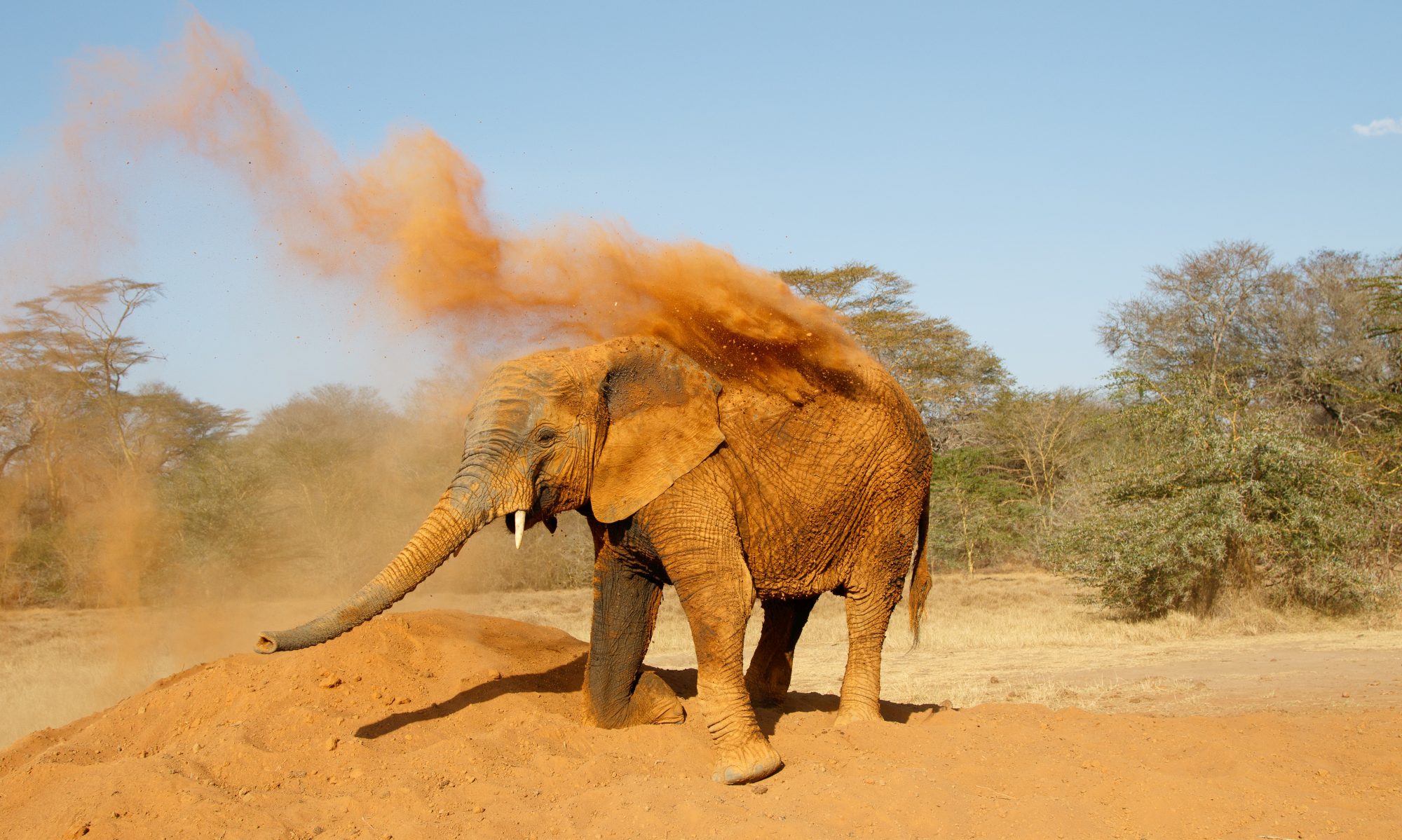NAIROBI, Kenya (AP)
In this photo of Monday, Jan. 24, 2011, elephants exit Africa’s first dedicated elephant underpass near the slopes of Mt. Kenya. Conservationists say the tunnel connects two elephant habitats that had been cut off from each other for years by human development. (AP Photo/Jason Straziuso)
Dusk had settled on Mount Kenya’s forested slopes, and traffic had slowed to a trickle on the region’s major highway. That’s when three elephants crossed through Africa’s first dedicated elephant underpass — a new solution to the increasing problem of animal-human conflict in Africa.
It was 6:47 p.m. when a gleaming set of white tusks poked through the end of the newly built underpass. A second set of tusks appeared. Then a third. Moving cautiously, the three young males climbed a bank of dirt, made a sharp left turn and crashed into the forest.
The $250,000 tunnel — built with donor funds — has successfully connected two wilderness areas and two distinct elephant populations separated for years by human development. The elephants successfully crossed a major road without putting themselves or motorists in danger, and without damaging crops or scaring residents in a nearby village.
"The first time we had a report about an elephant going under the underpass it was very exciting. We didn’t expect it to happen so quickly," said Susie Weeks, executive officer of the Mount Kenya Trust, one of the partners in the tunnel project. "They actually managed to go through it within days of it being opened."
The 15-foot-high (4.5-meter-high) tunnel opened for elephant business around Christmas, and on Jan. 1 a bull elephant named Tony made the first crossing. Accompanied by two other young males, Tony moved through the underpass again on Monday as an Associated Press reporter captured the first ever photos and video of elephants making use of the underpass.
Africa’s wildlife is coming under increasing pressure from human development. Villages are being built and crops raised in areas that for centuries were animal wildlands. The new elephant underpass reconnected wilderness areas on Mount Kenya’s highlands and the lower forests and plains, linking 2,000 elephants on Mt. Kenya with 5,000 more below.
Iain Douglas-Hamilton, the founder of Save The Elephants, said the 9-mile (14-kilometer) man-made corridor that surrounds the tunnel allows elephants to move from low to high to search for food and mates. The fenced-in corridor will also help strengthen the elephants‘ gene pool. The overall corridor and tunnel project cost $1 million.
"All over Africa this incredible wildlife is increasingly being fragmented by the growing human population, and if African wildlife is to survive, solutions must be found of this nature, where connectivity is preserved through corridors," he said.
"I think it’s a good example of the compromises that can be made between human interest and the survival of wild animals," he added.
The underpass is somewhat pricey, Douglas-Hamilton said. Cheaper solutions will also need to be found, including points where traffic will be stopped so elephants can cross the road, he said.
Kenya’s elephant underpass may be the first in Africa but not the world. China and India have elephant underpasses, and India even has elephant overpasses. In the U.S., a winner was announced Sunday in a contest to design a highway wildlife crossing in Vail, Colorado aimed at reducing collisions between cars and deer, coyote and bighorn sheep.
In South Africa’s Addo Elephant National Park, which is fragmented by roads and railway lines, officials recently opened an elephant crossing over a road, said Megan Taplin, a park spokeswoman. She said officials have considered overhead bridges that are wide and full of vegetation to help elephants move around.
Kenya’s underpass was 10 years in the making, and didn’t gather much momentum until Richard Branson, owner of Virgin Atlantic, donated $250,000. The Dutch government kicked in more money and other donors stepped up. Two major farms allowed the corridor to cross through their land.
One of those family farms gave up 671 acres to the corridor. The elephants have already caused $25,000 in damage, but farm owner-manager Charlie Dyer said he is "just overjoyed and really, really satisfied" to see the underpass in use.
The project had many skeptics, people who feared the elephants wouldn’t walk through a tunnel that humans had built.
"So many people were wondering, are we putting good money into this?" said Weeks. But so far about three dozen elephants passes have been made, providing conservationists with the answer they were hoping for.
The tunnel sits in the rolling hills below Mount Kenya, near fields of young green wheat and bright yellow canola stalks. It was lined with hay and elephant dung to entice the animals through. The bucolic lands can be dangerous, though.
Poaching is on the upswing, fueled by demand for ivory in China. John Pameri, the senior warden at the Lewa Wildlife Conservancy, one of the partners in the underpass project, said poachers killed more than 30 elephants in northern Kenya in December. Because elephant tusks have increased in value, poaching is "really a big, big danger," Pameri said.
Save the Elephants has put GPS collars on several elephants and can track their movements. Three minutes after Tony crossed through the tunnel Monday, an automatic text message alert went out to people like Weeks and Douglas-Hamilton, who has since watched Tony climb to the top of the elephant corridor on a Save The Elephants Google Earth maps program.
"This particular corridor is almost a symbol. It’s a very high profile one under the peaks of Mount Kenya, and what happens there is important for Kenya and for Africa in terms of conservancy of elephants and biodiversity," Douglas-Hamilton said.


